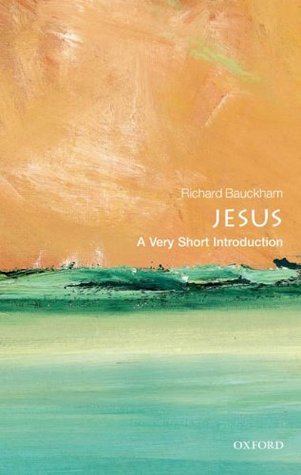More on this book
Kindle Notes & Highlights
Read between
February 9 - February 14, 2020
The account of Jesus in this book will be based on the view that the four Gospels in our New Testament are substantially reliable sources for knowing quite a lot about Jesus.
history is never a mere collection of facts but an exercise in interpretation.
know there is a difference between newspaper reports that are based on careful and accurate investigation and those that, for reasons of carelessness or bias or the pursuit of sensationalism, grossly distort the facts.
very different kinds of work.
this material world was made by an ill-intentioned demigod who bungled the job. Jesus was a supernatural emissary from the unknown high God, the Father, who came to enlighten those human beings, the Gnostics, who are trapped in this material world but truly belong with the Father in his transcendent world. Jesus brings them the knowledge of their true identity. The Gnostic Christ was not really human, but merely adopted human forms in order to appear in this world. He did not, for example, die.
the Gnostic Gospels do presuppose that the story and sayings of Jesus before his resurrection were well known.
The Gnostic Gospels, therefore, were designed to add. They are subsequent to the four Gospels not only chronologically but also logically.
that the four Gospels connect the story of Jesus closely with the story of Israel in the Hebrew Bible.
Inevitably, the Jewishness of Jesus, which is integral to his portrayal in the four Gospels, disappears from the Gnostic Gospels.
the Gnostic Gospels scarcely attempt to set Jesus in a real historical context
Absolutely fundamental for the form critics’ approach was their conviction that the Gospels are folk literature, derived from oral traditions,
By analogy, the Jesus traditions were anonymous community traditions, passed down in the early Christian communities, not connected to individuals such as those who had been eyewitnesses of Jesus’ history, but only to the local Christian community itself.
While some scholars have argued that the oral transmission of traditions preserved them rather faithfully, others have thought that much of the material in the Gospels must be attributed to the early church, rather than to Jesus.
certainly not be taken for granted that the Jesus of the Gospels – or the Jesuses of the four Gospels – really corresponds with the so-called historical Jesus, the Jesus who actually lived in 1st-century Jewish Palestine.
eyewitnesses. These probable dates of the Gospels also make it likely that they were written precisely because the eyewitnesses were dying and their authoritative testimony needed to be preserved in writing.
the best way of categorizing the Gospels as literature is to see them as biographies, more precisely biographies of a contemporary person, based (as such biographies were expected to be) on eyewitness testimony.
which John has expanded with his own reflective interpretation.
The 613 commandments of the Torah
But by the 1st century AD, there was a tendency to think that, since purity was a good thing, one should aim at being pure as much as possible.
The Jewish historian Josephus identified and described four main parties within Palestinian Judaism: Pharisees, Sadducees, Essenes, and a fourth category to which he gives no name.
In a situation of political powerlessness, the Pharisaic programme could have been seen as the most effective way to resist the Roman occupation.
governor. Sadducees had political power but their religious views were not influential.
as many Jews of this period imagined it, should have two ‘anointed ones’: a legitimate king descended from David and a legitimate high priest descended from Aaron and Zadok. The sectarian priests who wrote some of the Dead Sea Scrolls therefore expected two Messiahs, with the high priest in the dominant role. They also expected there to be a third figure, a prophet, with the function of communicating oracles from God, but this figure is never actually called an anointed one.
them) Jesus restored people to more than physical health. He also restored social relationships, re-integrating people into the society of God’s people Israel.
While the Pharisees turned ordinary meals into a practice of ritual holiness, Jesus turned ordinary meals into a practice of the coming of God’s kingdom.
Jacob. In Jesus’ practice of meal fellowship, he, so to speak, goes ahead with the love of God to welcome to the banquet everyone who will accept the invitation. Eating with Jesus was virtually tantamount to entering the kingdom and sitting at table with the patriarchs.
The number twelve could not fail to evoke the twelve tribes of Israel.
Jesus set about establishing a community of disciples that would be the nucleus of the renewed people.
To a would-be disciple who wanted first to bury his father, Jesus said, ‘Follow me, and let the dead bury the dead’. Seemingly, the urgent importance of the kingdom of God here takes precedence even over one of the Ten Commandments (the Commandment to honour one’s father and mother).
him, Jesus agonized over his coming death, begging the Father to spare him, but at the same time accepting it as his Father’s will. This was surely more than an ordinary fear of death. What Jesus was now undertaking was a journey to the darkest extremity of the human condition, where, deserted by friends, mocked by enemies, left to an excruciatingly painful death, Jesus felt, like so many people suffering in extremity, that even God had abandoned him.
(The word ‘incarnation’, meaning enfleshment or embodiment, is based on the prologue to John’s Gospel, which says that ‘the Word became flesh’.)
Incarnation means that God has shared in the human plight even at its most extreme in order that he might deliver people from that plight.


